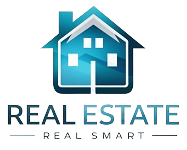Yes, you can get a HELOC on investment property, and it can unlock powerful equity financing opportunities to grow your rental portfolio. A Home Equity Line of Credit (HELOC) allows real estate investors to access funds flexibly while leveraging the value of their income-generating properties. This guide explains how a HELOC works, the requirements, lender options, and how to maximize its potential without risking overexposure.

Content
What Is a HELOC on Investment Property?
A HELOC on investment property is a revolving credit line secured by the equity in a rental or income-producing property. Unlike a traditional mortgage, it works like a credit card: you borrow what you need, repay it, and borrow again during the draw period. Investors use HELOCs for renovations, down payments on new properties, or emergency capital—making them a versatile tool in any real estate strategy.
Can You Get a HELOC on a Rental Property?
Can you get a HELOC on a rental property? Yes, but expect more stringent lending criteria than for your primary residence. Lenders view investment properties as higher risk due to market volatility and the possibility of tenant turnover. If you want to learn how to get a HELOC on rental property, start with:

- Demonstrating strong rental income
- Proving at least 25–30% equity in the property
- Meeting credit and income requirements
It’s essential to prepare a complete financial picture for your application.
HELOC Requirements for Investment Properties
The investment property HELOC requirements differ from standard HELOCs. Here’s what you typically need:
- Credit Score: Most lenders prefer 700+
- Equity: At least 25% in the property
- DTI Ratio: Should be below 43%
- Stable Income: Proof of rental income and other assets
Meeting these benchmarks improves your approval chances and helps you access better terms and lower interest rates. Lenders may also require property appraisals and tax documents.
Best Banks for HELOC on Investment Property
Finding the best banks for HELOC on investment property is crucial since not all institutions offer this product. Here are some investor-friendly lenders:

- Figure: Online-only lender with quick approval
- U.S. Bank: Offers investment property HELOCs with competitive terms
- TD Bank: Flexible draw periods for investors in select states
- Flagstar Bank: Specializes in portfolio lending for rental properties
Always compare interest rates, draw periods, and repayment terms when evaluating your options.
Interest Rates and Terms to Expect
The interest rates for HELOC on investment property are usually higher than those for owner-occupied homes due to greater risk. Rates typically range from 7% to 11%, depending on creditworthiness and property type.
Terms often include:
- Draw Period: 5 to 10 years
- Repayment Period: 10 to 20 years
- Payments: Interest-only during draw phase
Because rates are often variable, you should be cautious about borrowing large amounts if market conditions may change.
HELOC vs Cash-Out Refinance Investment Property
When comparing HELOC vs cash out refinance investment property, consider the differences:
| Feature | HELOC | Cash-Out Refinance |
|---|---|---|
| Funds | Revolving credit | Lump-sum cash |
| Interest Rate | Variable | Fixed or adjustable |
| Closing Costs | Lower | Higher |
| Flexibility | High | Limited |
A HELOC provides greater financial control and flexibility, while a cash-out refinance locks in a lump sum and may offer long-term stability for large capital needs.
Using HELOC to Buy Investment Property
Many investors use a HELOC to buy investment property by accessing equity in a current rental. Here’s how:
- Apply for a HELOC on an existing property
- Use the funds for the down payment or full purchase
- Refinance the new property after increasing its value
- Pay back the HELOC and repeat the cycle
This approach is commonly used in the BRRRR method (Buy, Rehab, Rent, Refinance, Repeat) and allows investors to scale quickly without selling existing assets.
Tax Implications of HELOC on Investment Property
The tax implications of HELOC on investment property vary depending on how the funds are used. According to IRS rules:
- Deductible: If funds are used to buy, build, or substantially improve the rental
- Not deductible: If used for personal expenses or unrelated investments
Always keep records of how HELOC funds are spent. Consulting a tax professional ensures you’re compliant and able to maximize potential deductions.
HELOC on Second Home vs Investment Property
Understanding the difference between a HELOC on second home vs investment property is essential. A second home is for personal use (like a vacation home), while an investment property is rented to generate income.
Lenders may offer:
- Lower rates for second homes
- Easier qualification
- Different usage requirements
Misclassifying your property type can cause legal and financial complications, so make sure to be transparent when applying.
Pros and Cons of HELOCs for Real Estate Investors
Using a HELOC for real estate investors comes with notable advantages and risks:
Pros:
- Flexibility to draw funds when needed
- Lower upfront costs than traditional loans
- Can fund improvements that increase property value
- Helps scale your investment portfolio
Cons:
- Variable interest rates can rise unexpectedly
- May require strong credit and equity
- Missed payments could lead to foreclosure
- Not all properties qualify
A HELOC is best for experienced investors with a clear strategy and risk management plan.
Expert Tips to Maximize a HELOC Strategy
To make the most of your HELOC:
- Use funds only for property-related expenses
- Reinvest into high-ROI renovations or purchases
- Track interest and expenses for tax purposes
- Avoid using HELOCs for personal or discretionary spending
- Build a relationship with lenders that offer investor products
Staying disciplined helps protect your credit and ensures your HELOC supports your financial goals.
Conclusion
A HELOC on investment property offers real estate investors a powerful way to access capital, fund renovations, or acquire new properties. While the requirements are stricter than for personal residences, the benefits—like flexibility, control, and potential tax advantages—make it a smart move when used wisely. Compare lenders, understand the terms, and integrate a HELOC into your broader investment strategy to grow your real estate portfolio in 2025 and beyond.
HELOC on Investment Property can be a smart financial tool for real estate investors looking to tap into their property’s equity. By using a Home Equity Line of Credit (HELOC), you gain flexible access to funds that can be reinvested in property upgrades, debt consolidation, or even acquiring new assets. If you’re seeking exposure in the real estate and finance space, you can also connect with our platform and Advertise With Us to reach a highly targeted audience of investors and homeowners.
Frequently Asked Questions
Can I get a HELOC on a rental property I just bought?
Most lenders require you to own the property for at least 6–12 months before qualifying for a HELOC.
Is interest on a HELOC for investment property tax deductible?
Yes, but only if the funds are used to improve or invest in the property. Personal expenses do not qualify.
What’s the minimum credit score for a HELOC on investment property?
Lenders typically require a score of 700 or higher, though some may accept lower depending on equity and income.

With a sharp eye for design and a passion for renovation, Samantha transforms fixer-uppers into dream homes. Her expertise in remodeling adds extra value to your real estate experience.












